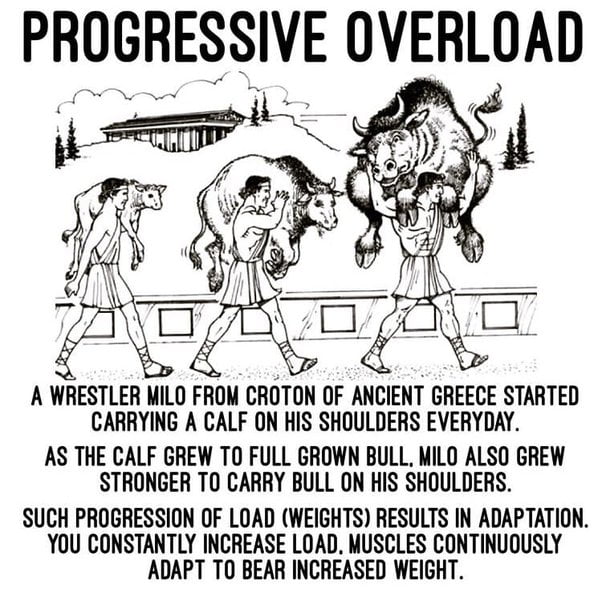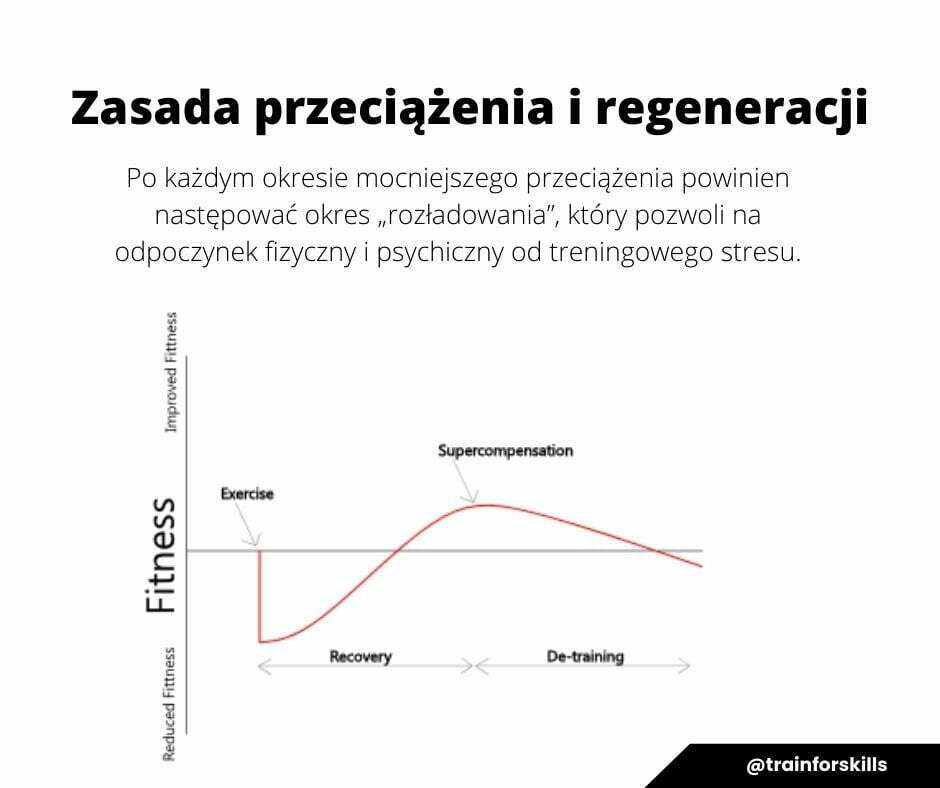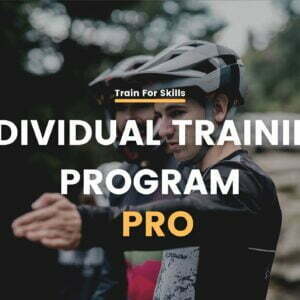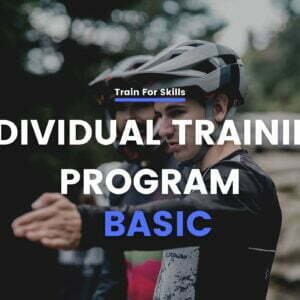How to start training? This is a question I often hear from beginners or athletes who want to return to the gym after the season. Many people are looking for the best training plan for themselves to start. You won’t find it in this article, but I’ll give you something much better instead. I will show you training principles that will help you understand what training should look like. If you use them, you will be able to arrange training for yourself and manage it in the future.
Well-planned and executed training will help you ride faster and longer. It will also protect you from injury and prepare you for competitions. However, there is a huge difference between a smartly designed workout and imitating what others at the gym are doing.
Want to know how to start training? Learn the 5 training rules!
5 training rules
- Progressive increase of loads
- Diversity
- Individualize
- Specificity
- Principle of overload and recovery
1. Progressive increase of loads
The principle of progressive increase of loads is best illustrated by the Greek mythology telling the story of the legendary Milo of Croton. In order to become the strongest man on earth Milo in his teens began to carry a calf every day going up the mountain. With each passing day, the calf grew bigger and heavier, and Milo grew stronger. In time, the little calf turned into a full-grown bull, and Milo became the strongest man in the world. This story depicts the long-term progression.

More specifically, progressive training induces adaptations in the structure and function of an athlete’s body. This increases motor potential, and the result is better performance in sports. Progression of loads affects the body’s response in 2 spheres:
- Physiologically – muscles, bones and tissues become stronger as a result of systematic loading
- Psychologically – the nervous system begins to cope better with the stress caused by training and strain
Progressive increase in load is the variable that produces the greatest morphological and functional changes. There are many ways to progress and increase loads to induce adaptations such as; hypertrophy, muscular endurance, maximal strength or power.
Increasing the load (intensity) can be done by modifying training parameters:
- Weight
- Number of repetitions
- Number of series
- Repetition rate
- Rest
Depending on what kind of adaptation we want to achieve, we modify specific training parameters. Load progression should occur gradually over the training cycle. In the training cycle, after the period of the highest load, the so-called “deload” is applied. Deload means time for recovery and preparation for the next progression. In practice w means 2-4 weeks of increasing intensity or volume, followed by a week of easier workouts.
2. Diversity
Systematic training requires many hours of work from the athlete. The training plan often involves increasing intensity and volume throughout the year. During this time, the exercises are repeated many times. Any athlete who wants to seriously improve their fitness and performance needs to devote 2 to 4 hours a week to strength training.
Such conditions can promote greater boredom and monotony, which become a constraint on motivation and training progress. For this reason, it is necessary to introduce variety into training, which will improve the body’s response and have a positive effect on the athlete’s well-being. Here are tips on how to incorporate variety into your training.

- Vary the range of motion (ROM) from full in the general preparation phase to sport-specific range in the special preparation phase.
- Use multiple forms of one exercise – don’t limit your lower body training to a squat with a barbell, but introduce other forms, for example. Split Squat, Cossack Squat, Single Leg Squat, Sisi Squat etc.
- Change the load (kg) according to the principle of progressive increase of loads.
- Add variety to the exercises by adding different types of contraction and movement speeds. It usually starts with slow and controlled movement, through isometrics to fast and dynamic repetitions.
- Use different training methods: super sets, contrast sets, drop sets, reps ladder, rounds, max strength, amrap etc.
- Use a variety of equipment; dumbbells, balls, kettlebells, barbells and introduce body weight exercises.
Variety in training should be applied with continuity of adaptation. This means that it is not worth changing every exercise every week, because then you will not achieve the expected results in terms of improved technique or strength gains.
3. Individualization
Modern training requires individualization. If you are working with a trainer, your trainer should conduct an analysis and evaluate your capabilities, and then plan the appropriate training for your needs. On the other hand, if you do not work individually with a trainer or use our group training program(TFS Enduro or TFS Downhill) then you can still apply the principle of individualization in your training. This is possible by adjusting the load or number of repetitions to your strength as well as performing a full or scaled version of the exercise.
You can also individualize your training due to your fatigue level, e.g. if you are after two days of riding you will do strength training on Monday, but you will do 50% less volume. This will help maintain adaptation and not interfere with recovery. On the other hand, if you feel very tired, you can let go of training at the expense of rest.

During consultations with athletes when they ask how to arrange training days during the season or during a trip, I recommend them to be guided by fatigue or if one has an HRV monitor. It’s good to have a set training plan for specific days, but life doesn’t always work out according to our assumptions. Then it’s a good idea to listen to your body and adjust your training under that.
4. Specificity
The principle of specificity states that we must use training methods and forms relevant to what we want to achieve. Typically, these are adaptations specific to dango sports. When planning training, we should do an analysis of the motor skills needed for a particular sport, which will take into account the following:
- share of individual energy systems
- determination of body position and joint alignment
- planes of motion
- What are the so-called. “prime movers” or major muscle groups and what work they do (eccentric, concentric, isometric)
A coach or athlete planning training must determine what energy system is critical in a particular sport. Is it the aerobic system; which dominates in long efforts >5 min, the glycolytic system; which dominates in intense efforts lasting between 20-60 sec, or is it the ATP-PC phosphagen system; which is involved in very intense and short efforts such as 6-second sprints. Very often there is a mixture of these 3 systems, but usually one of them should be the priority.

At this point, I would also like to explain what specific strength is, so as not to confuse it with the concept of functional strength.
Specific strength refers to the physiological and psychological component of the athlete. It is the adaptation of the musculoskeletal apparatus and nervous system to the specific ability the athlete performs during sports. Specific strength improves ability in a specific joint position that is required in a particular sport. Functional strength, on the other hand, is strength training that involves exercising muscles and joints in the planes of work for which they were designed and not limiting themselves to a narrow specialization such as a particular sport. Typically, functional strength is that which we shape during the general preparation period, and over time we transform it into specific strength closer to the season.
5. Principle of overload and recovery
Anyone wondering how to start training needs to know this – any workout, strength or technical, puts stress on our bodies. Depending on how trained we are, everyone will recover at a different rate. For this reason, the principle of overload and recovery is very much linked to the first one, which talks about gradual progression. Each period of heavier overload should be followed by a period of “unloading”(deload) to allow physical and mental rest from training stress. For this reason, any wisely planned workout must include time to reduce loads and rest.

Summary
There are many methods and tools, but only a few principles. If you understand and implement these 5 basic training principles you can be sure that your training will bring results in the long term.
Use code “START” and receive a 10% discount on your first month in the TFS Enduro, TFS Downhill or TFS XC/Marathon program




